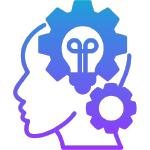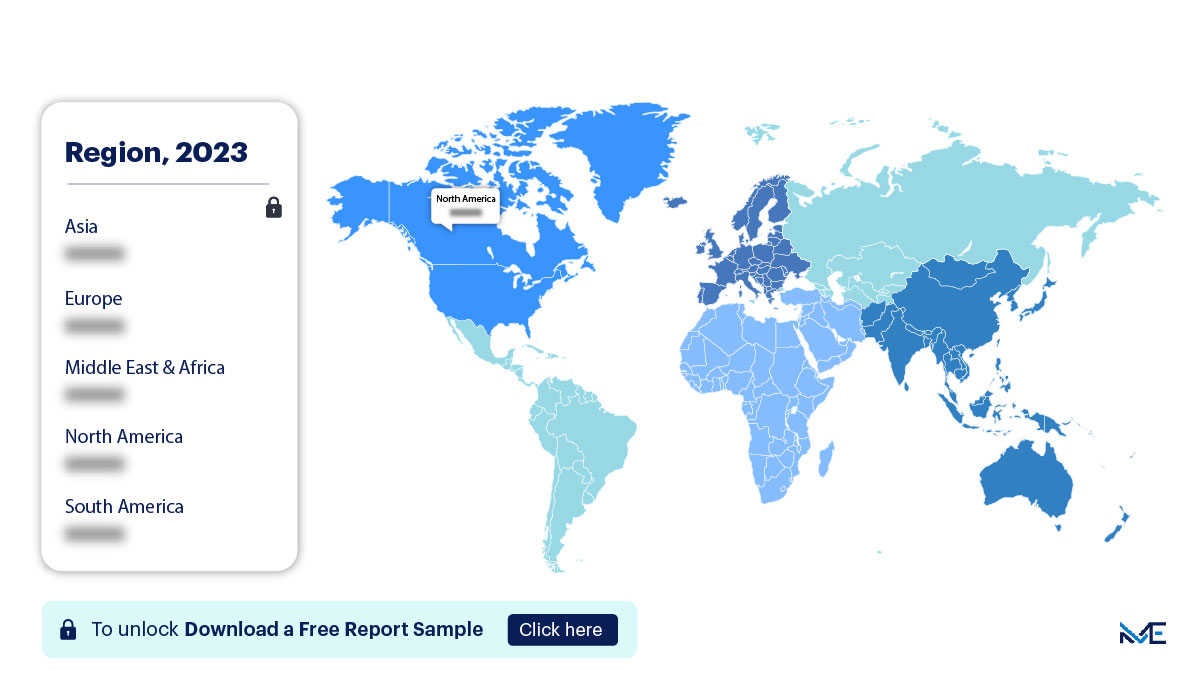Market Snapshot
| Study Period | 2019-2032 |
| Base Year | 2023 |
| Forcast Year | 2023-2032 |
| CAGR | 5.83 |


Gain accurate insights regarding the negative impacts of COVID-19 on all markets and industries
Download Sample PdfReport Overview
The Depression Treatment Market size is estimated to grow at a CAGR of 5.25% between 2022 and 2032. The market size is forecast to increase by USD 12,765.89 million. The growth of the market depends on several factors, including the rising prevalence of depression, increased awareness about mental health, and advancements in treatment modalities. Depression is a mental health condition characterized by persistent feelings of sadness, hopelessness, and a lack of interest or pleasure in everyday activities. It can have a profound impact on an individual's quality of life, and effective treatment is crucial.
Depression Treatment Market Overview:
Drivers:
One of the primary drivers of the depression treatment market is the increasing awareness of mental health issues. In recent years, there has been a significant shift in society towards acknowledging and addressing mental health concerns, including depression. This shift has led to greater demand for depression treatment options, including therapy, medication, and other interventions.
Moreover, advancements in treatment modalities, such as the development of new antidepressant drugs and innovative therapies like transcranial magnetic stimulation (TMS) and ketamine infusion therapy, have expanded the range of treatment options available to individuals with depression. These advancements offer new hope for those who may not have responded well to traditional treatments.
Trends:
A key trend shaping the depression treatment market is the integration of technology in mental health care. Telemedicine and digital mental health platforms have gained prominence, especially in light of the COVID-19 pandemic. These technologies enable individuals to access therapy and support remotely, making mental health care more accessible and convenient. Additionally, mobile apps and wearables that track mood and provide coping strategies are becoming increasingly popular.
Furthermore, there is growing interest in personalized medicine for depression treatment. Genetic testing and biomarker analysis are being explored to identify the most effective treatment options for individual patients. This trend towards personalized care is expected to continue driving innovation in the depression treatment market.
Restraints:
One of the key challenges in the depression treatment market is the stigma associated with mental health issues. Many individuals with depression may delay or avoid seeking treatment due to fear of judgment or discrimination. Overcoming this stigma and increasing public awareness about the importance of seeking help for mental health concerns is a critical challenge for the industry.
Additionally, the cost of mental health care, including therapy and medications, can be a barrier to access for some individuals. Addressing affordability and improving insurance coverage for mental health services is essential to ensure that everyone has access to effective depression treatment.
Depression Treatment Market Segmentation By Treatment Type:
The antidepressant medication segment is estimated to witness significant growth during the forecast period. Antidepressant medications are a common and widely prescribed treatment for depression. These medications work by balancing neurotransmitters in the brain to improve mood and reduce symptoms of depression. As awareness of depression grows and new medications with fewer side effects become available, the demand for antidepressant drugs is expected to increase.
Another important segment is psychotherapy, which includes various forms of talk therapy. Cognitive-behavioral therapy (CBT), interpersonal therapy (IPT), and psychodynamic therapy are some of the commonly used psychotherapeutic approaches for treating depression. These therapies provide individuals with the skills and support needed to manage their depression and improve their mental well-being.
Depression Treatment Market Segmentation By Modality:
The teletherapy segment is experiencing significant growth as the use of telehealth services for mental health care becomes more prevalent. Teletherapy allows individuals to access therapy sessions with licensed mental health professionals via video calls, phone calls, or text-based platforms. This modality offers convenience and accessibility, particularly for individuals who may have difficulty attending in-person sessions due to location or other constraints.
In addition to teletherapy, innovative treatments like transcranial magnetic stimulation (TMS) and ketamine infusion therapy are gaining traction. TMS involves using magnetic fields to stimulate specific regions of the brain associated with mood regulation. Ketamine infusion therapy is a novel approach that has shown promise in rapidly relieving symptoms of treatment-resistant depression.
Regional Overview:

Download the report summary now!
Request pdf Sample

Download the report summary now!
Request pdf SampleNorth America is estimated to contribute significantly to the growth of the global depression treatment market during the forecast period. The region has a well-established mental health care infrastructure and a high level of awareness about depression and its treatment. The COVID-19 pandemic has accelerated the adoption of teletherapy and digital mental health services in North America, further boosting the market's growth.
In Europe, countries like the United Kingdom, Germany, and France have made substantial investments in mental health care, leading to increased access to depression treatment options. The Asia-Pacific (APAC) region, particularly countries like China and India, is also witnessing a growing demand for depression treatment as awareness of mental health issues continues to rise.
Depression Treatment Market Customer Landscape:
The depression treatment market industry report includes an analysis of the adoption lifecycle, from early adopters to laggards, and provides insights into the factors influencing purchasing decisions. It also explores key purchase criteria and factors affecting price sensitivity to help companies develop effective growth strategies.
Major Depression Treatment Market Companies: Companies in the depression treatment market are implementing various strategies to expand their presence and improve treatment options.
- Pfizer Inc.: Pfizer offers a range of antidepressant medications, including sertraline (Zoloft) and venlafaxine (Effexor XR).
- Johnson & Johnson: Johnson & Johnson subsidiary Janssen Pharmaceuticals manufactures the antidepressant medication esketamine (Spravato), used in ketamine infusion therapy.
- Takeda Pharmaceuticals: Takeda develops antidepressant drugs such as vortioxetine (Trintellix) to address depression symptoms.
- Talkspace: Talkspace is a prominent teletherapy platform that connects individuals with licensed therapists for online counseling.
- Mindstrong Health: Mindstrong Health specializes in digital mental health solutions, using smartphone data to provide insights and support for individuals with depression and other mental health conditions.
- NeuroStar Advanced Therapy: NeuroStar offers transcranial magnetic stimulation (TMS) therapy systems for the treatment of depression.
The competitive landscape of the market includes these companies and others, each contributing to the evolution of depression treatment options.
Segment Overview:
- Treatment Type Outlook (USD Million, 2019 - 2032)
- Antidepressant Medication
- Psychotherapy
- Other Therapies (TMS, Ketamine Infusion, etc.)
- Modality Outlook (USD Million, 2019 - 2032)
- Teletherapy
- In-Person Therapy
- Other Modalities
- Geography Outlook (USD Million, 2019 - 2032)
- North America
- The U.S.
- Canada
- Europe
- U.K.
- Germany
- France
- Rest of Europe
- APAC
- China
- India
- South America
- Brazil
- Argentina
- Chile
- Middle East & Africa
- Saudi Arabia
- South Africa
- Rest of the Middle East & Africa
RESEARCH METHODOLOGY
A research methodology is a systematic approach for assessing or conducting a market study. Researchers tend to draw on a variety of both qualitative and quantitative study methods, inclusive of investigations, survey, secondary data and market observation.
Such plans can focus on classifying the products offered by leading market players or simply use statistical models to interpret observations or test hypotheses. While some methods aim for a detailed description of the factors behind an observation, others present the context of the current market scenario.
Now let’s take a closer look at the research methods here.
Secondary Research Model
Extensive data is obtained and cumulated on a substantial basis during the inception phase of the research process. The data accumulated is consistently filtered through validation from the in-house database, paid sources as well reputable industry magazines. A robust research study requires an understanding of the overall value chain. Annual reports and financials of industry players are studied thoroughly to have a comprehensive idea of the market taxonomy.
Primary Insights
Post conglomeration of the data obtained through secondary research; a validation process is initiated to verify the numbers or figures. This process is usually performed by having a detailed discussion with the industry experts.
However, we do not restrict our primary interviews only to the industry leaders. Our team covers the entire value chain while verifying the data. A significant number of raw material suppliers, local manufacturers, distributors, and stakeholders are interviewed to make our findings authentic. The current trends which include the drivers, restraints, and opportunities are also derived through the primary research process.
Market Estimation
The market estimation is conducted by analyzing the data collected through both secondary and primary research. This process involves market breakdown, bottom-up and top- down approach.
Moreover, while forecasting the market a comprehensive statistical time series model is designed for each market. Macroeconomic indicators are considered to understand the current trends of the market. Each data point is verified by the process of data triangulation method to arrive at the final market estimates.
Final Presentation
The penultimate process results in a holistic research report. The study equips key industry players to undertake significant strategic decisions through the findings. The report encompasses detailed market information. Graphical representations of the current market trends are also made available in order to make the study highly comprehensible for the reader.
Personalized Business Report Tailored to Your Requirements
- Our expert analysts collaborate directly with you to comprehend your specific needs.
- Get data on regions, segments, competitors, and vendors of your choice.
- Information is presented in alignment with your exact preferences and formatting.
Free Sample Report
"Find new revenue generation opportunities"

